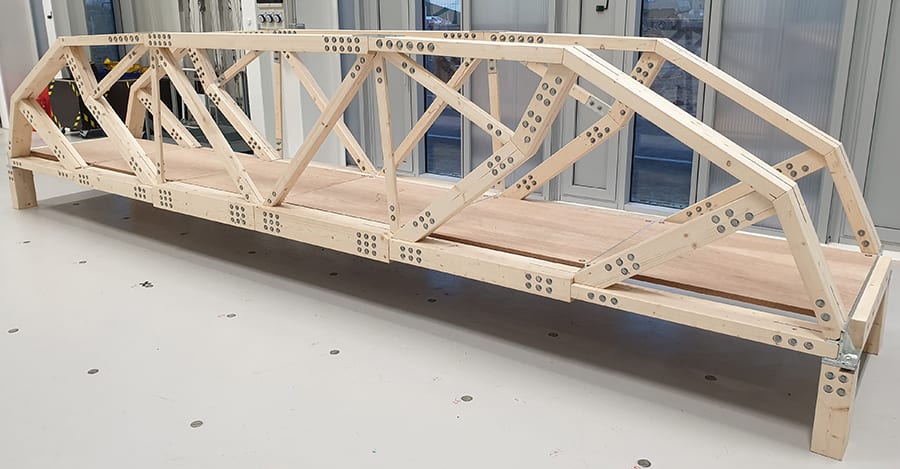An innovative government-backed structural optimisation tool can produce lower carbon building frame designs “many orders of magnitude” faster than existing solutions on the market, its lead developer claims.
Peregrine is a plugin for Grasshopper, the algorithmic modelling environment built into Rhino 3D modelling software, which uses a powerful optimisation engine to rapidly identify efficient, strong and light skeletal frame designs for buildings and structures. Various inbuilt tools make it possible to transform the outputs into more practical designs.
The plugin was developed by the UK government-funded research project Build-Opt, involving, among others, the Universities of Sheffield, Bath and Edinburgh, as well as Aecom, Arup, Buro Happold. The commercial product, launched by LimitState, a spin off company from the University of Sheffield, is free to use until June before moving to a monthly subscription.
Efficient building designs that incorporate fewer raw materials are considered crucial in the drive to lower greenhouse gases. Professor Matthew Gilbert, project principal investigator for Build-Opt and managing director of software firm LimitState, told BIM+: “A very large proportion of the cost and carbon footprint of any given building design is dictated by decisions made early in the design stage. We see Peregrine as a handy tool to enable designers to very quickly see what is achievable, rather than have to resort to a standard design, helping reduce the amount of materials consumed in construction.”
Peregrine identifies highly-efficient, minimum-volume frame topologies for any given set of loads, supports and material properties. A key differentiator, says Gilbert, is the software’s use of rigorous gradient mathematical methods to quickly identify optimal solutions, where existing metaheuristic methods, though powerful and flexible, are much slower. The tool is also designed to converge on global, rather than locally optimal solutions.


Build-Opt fabricated two equivalent timber bridge structures, the first using a traditional system of Warren equilateral trusses (top), the second optimised using Peregrine and incorporating trusses of various dimensions and orientations (above)
“Although benchmark figures haven’t yet been produced, Peregrine is many orders of magnitude faster [than existing tools] and for relatively straightforward problems it is instantaneous,” said Gilbert.
The system produces the optimal solution for any given scenario, then designers must decide if the design is buildable or if it requires simplification using a set of automatic tools in Grasshopper. Various virtual sliders make it possible to alter different parameters, such as the number of members or joints, whilst ensuring subsequent solutions remain close in weight to the original.
In one trial, Build-Opt fabricated two equivalent timber bridge structures, the first using a traditional system of Warren equilateral trusses, the second optimised using Peregrine and incorporating trusses of various dimensions and orientations. The latter was shown to perform the same structurally, yet it consumed approximately half the amount of material and, despite the added complexity, cost no more to produce.
“As we move towards more automated manufacturing techniques, the premium on complexity is expected to reduce, soon there will be very little extra cost associated with additional complexity,” said Gilbert.
An enhanced version of Peregrine is currently being developed through the partnership between LimitState, the University of Sheffield and Arup, that will incorporate tools to tackle more complex building design problems.
“We’re working on more holistic optimisation, to extend the scope to enable it to produce not just the outer frame, but the full network of beams, columns and cross-bracing needed to support the weight of a building. That holistic approach should significantly cut the amount of material required,” Gilbert concluded.















